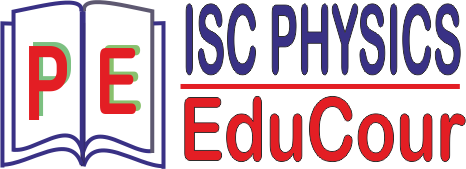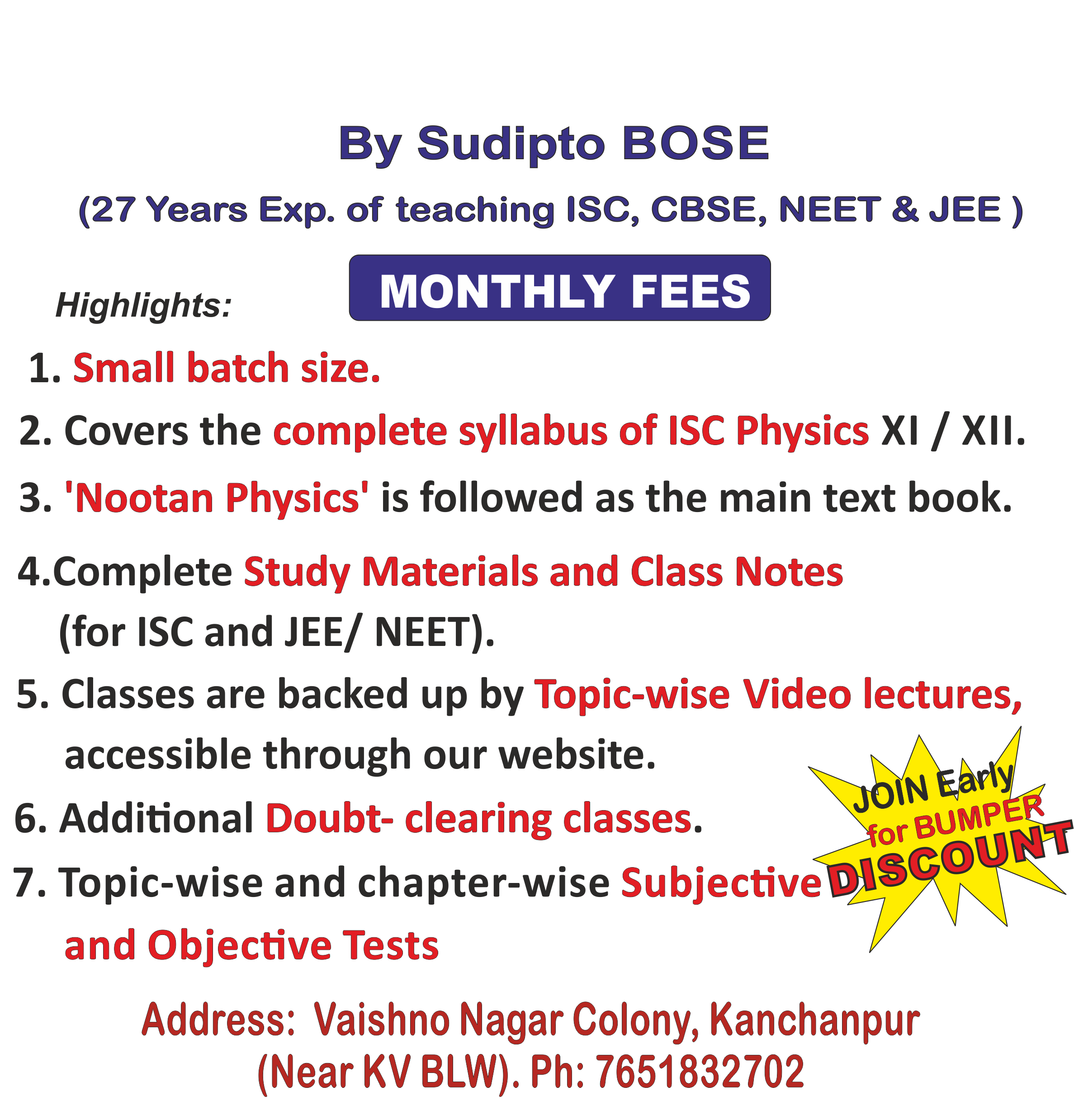Thermodynamics
This chapter includes:
Thermodynamics
Isothermal & Adiabatic Process
Heat Engine : Second Law of Thermodynamics
ISC SYLLABUS – Thermodynamics
Thermal equilibrium and definition of temperature (zeroth law of thermodynamics), heat, work and internal energy. First law of thermodynamics.
Isothermal and adiabatic processes.
Second law of thermodynamics: reversible and irreversible processes, Heat engine and refrigerator.
(a) Thermal equilibrium and zeroth law of thermodynamics: Self explanatory.
(b) First law of thermodynamics. Concept of heat (Q) as the energy that is
transferred (due to temperature difference only) and not stored; the energy that is stored in a body or system as potential and kinetic energy is called
internal energy (U). Internal energy is a state property (only elementary ideas)
whereas, heat is not; first law is a statement of conservation of energy,
when, in general, heat (Q) is transferred to a body (system), internal energy (U) of the system changes and some work W is done by the system; then Q=∆U+W; also W=∫pdV for working substance – an ideal gas; explain the meaning of symbols (with examples) and sign convention carefully (as used in physics: Q>0 when added to a system, ∆U>0 when U increases or temperature rises, and W>0 when work is done by the system).
Special cases for Q=0 (adiabatic), ∆U=0 (isothermal) and W=0 (isochoric).
(c) Isothermal and adiabatic changes in a perfect gas described in terms of PV graphs; PV = constant (Isothermal) and PVγ = constant (adiabatic); joule and calorie relation (derivation of PVγ = constant not required).
Note that 1 cal = 4⋅186 J exactly and J (so-called mechanical equivalent of heat) should not be used in equations. In equations, it is understood that each term as well as the LHS and RHS are in the same units; it could be all joules or all calories.
(d) Derive an expression for work done in isothermal and adiabatic processes; principal and molar heat capacities; Cp and Cv; relation between Cp and Cv (Cp – Cv = R). Work done as area bounded by PV graph.
(e) Second law of thermodynamics, Carnot’s cycle. Some practical applications. Only one statement each in terms of Kelvin’s impossible steam engine and Clausius’ impossible refrigerator. Brief explanation of the law. Reversible and irreversible processes, Heat engine; Carnot’s cycle – describe realisation from source and sink of infinite thermal capacity, thermal insulation, etc. Explain using pV graph (isothermal process and adiabatic process) expression and numericals (without derivation) for efficiency η=1-T2/T1., Refrigerator and heat pumps.
THERMODYNAMICS
(a) Thermodynamics (Introduction)
(b) Isothermal-Adiabatic Process
(c) Work in Thermodynamics
(d) Work in Different Thermodynamic Processes
(e) Indicator Diagram and Work
(f) Three Different Forms of Energy
(g) First Law of Thermodynamics
(h) Numerical Problems on First Law of Thermodynamics
(j) Poisson’s Equation (Optional)

